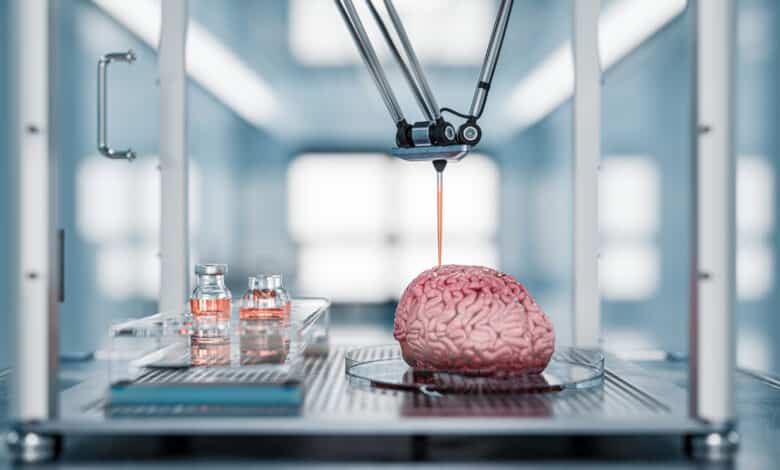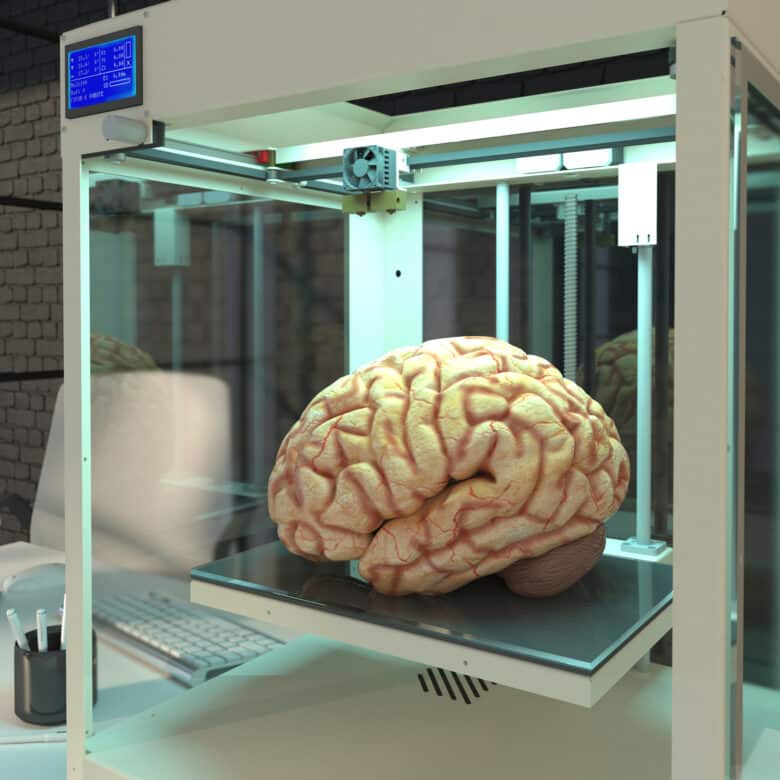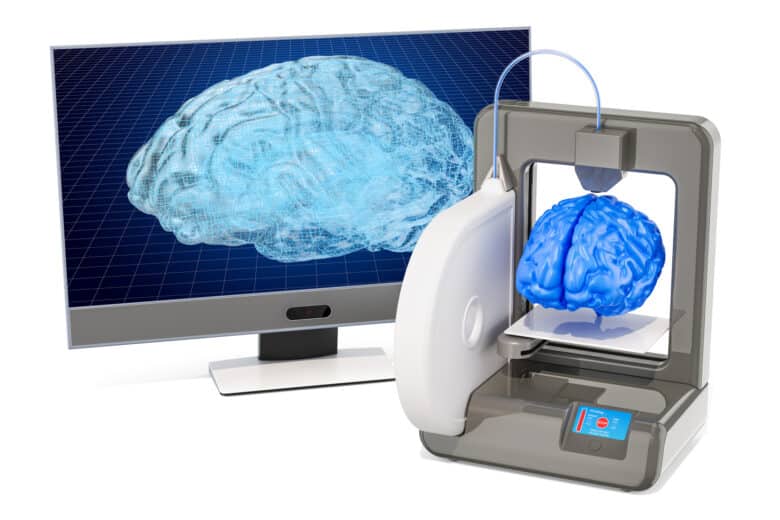
Souvenirs, small gifts and game pieces for tabletop games at home. The areas of application for 3D printers are diverse. However, these little technical helpers have long been used in completely different areas such as industry and medicine. A team of scientists has now succeeded in reaching a new milestone in the history of 3D printers. They have managed to reproduce the complex structures of brain tissue. The result is nothing less than impressive.
US researchers achieve breakthrough
Scientists have been working meticulously for centuries to completely decode the functioning of the human brain. However, medicine has not yet succeeded in unraveling all the secrets of the computer in our heads. Researching the human brain is not that easy. Here, researchers are usually dependent on people who make their bodies available to medicine as research objects after their death. Research on the brains of living people would of course be far more effective. After all, you could then watch the human control center at work in real time. However, the detailed view of each individual process is missing here.

An alternative to the “real” human brain is a replica of it. This is probably what the research team led by scientist Su-Chun Zhang thought. The physicians from the University of Wisconsin-Madison quickly recreated the cell structure of our brain in an experimental setup. They used a 3D printer that used living brain cells as a filament equivalent. The result was a series of brain tissue that was stacked in just a few layers. Thanks to the low height, the researchers want to maintain a better overview of the processes in the brain replica.

An initial result is already available, as reported in the journal “Cell Stem Cell”. The scientists claim to have identified communications between the synapses. This could mean that the researchers have solved a major problem in science. After all, attempts have so far been made to study the brain in its classical structure. However, due to the vertical structure, this was only possible under difficult conditions. In contrast, the flat experimental setup using a 3D printer also allowed a lateral view. What’s more, the researchers found that the synapses can make contact with each other much better in the flat structure.
3D printers as hope in medicine
Of course, the main aim of the research is to cure brain diseases. If the experimental setup proves to be practicable, the scientists believe it will be possible to combat diseases in a very targeted manner. This is because cells could be used wherever they are needed. In particular, if there is a problem with signal transmission between individual synapses, tissue created in the 3D printer could work wonders. The method can also be used to develop specific test samples. If, for example, an Alzheimer’s patient needs targeted treatment, doctors could test treatment options on the replicated tissue beforehand. This significantly reduces the risk of incorrect treatment and increases the chances of a suitable therapy being successful.



